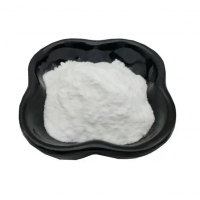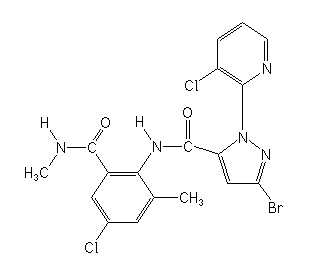including those belonging to the families Noctuidae, Tortricidae, Chrysomelidae, Tenebrionidae, Pyralidae, and others.
2.Chlorantraniliprole is commonly applied to rice fields, fruit trees, and various crops.
3.Chlorantraniliprole has strong penetration ability. It should not be applied to plants in the two weeks leading up to their maturation,
as it can pose a certain level of risk to humans when used during that period. When spraying plants with Chlorantraniliprole, it is advisable
to do so before 10 AM or after 4 PM and avoid spraying during midday.
as it can pose a certain level of risk to humans when used during that period. When spraying plants with Chlorantraniliprole, it is advisable
to do so before 10 AM or after 4 PM and avoid spraying during midday.
4.Chlorantraniliprole is highly effective, and typically, it is applied every two weeks to control insect pests. 2 to 3 rounds of spraying can alleviate
pest infestations. It is recommended to wear gloves and a mask when applying Chlorantraniliprole, even though it is classified as a low-toxicity
pesticide, as safety precautions should always be observed.
5.The residual efficacy of Chlorantraniliprole lasts for about two weeks. Before each application, the pesticide can be diluted with water to adjust
its concentration. Chlorantraniliprole acts through a mechanism that paralyzes insect muscles, leading to insect death. In general, insects usually
die within 1 to 3 days after consuming the pesticide.
rops
|
Product Name |
Chlorantraniliprole |
|
Molecular Formula |
C18H14BrCl2N5O2 |
|
CAS No. |
500008-45-7 |
|
Molecular Structure |
|
|
Molecular Weight |
483.146 |
|
Properties |
97% TC, 20% Chlorantraniliprole SC, 5% Chlorantraniliprole |
|
Appearance |
White crystalline powder |
|
Melting Point |
208-210? |
|
Bolling Point |
526.6? |
|
Flash point |
272.3? |
|
Relative Density |
1.507g/cm3 |
|
Solubility |
|






